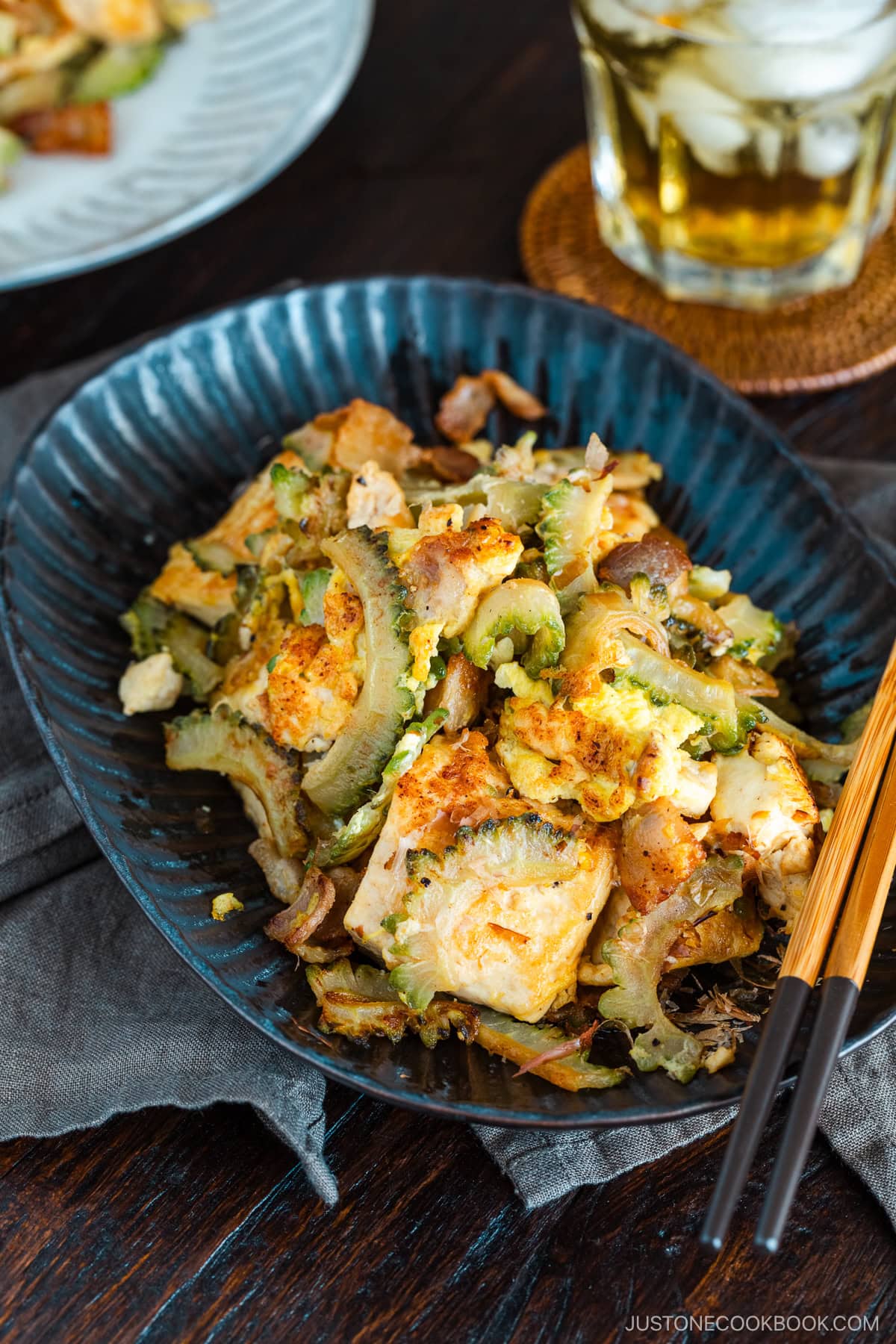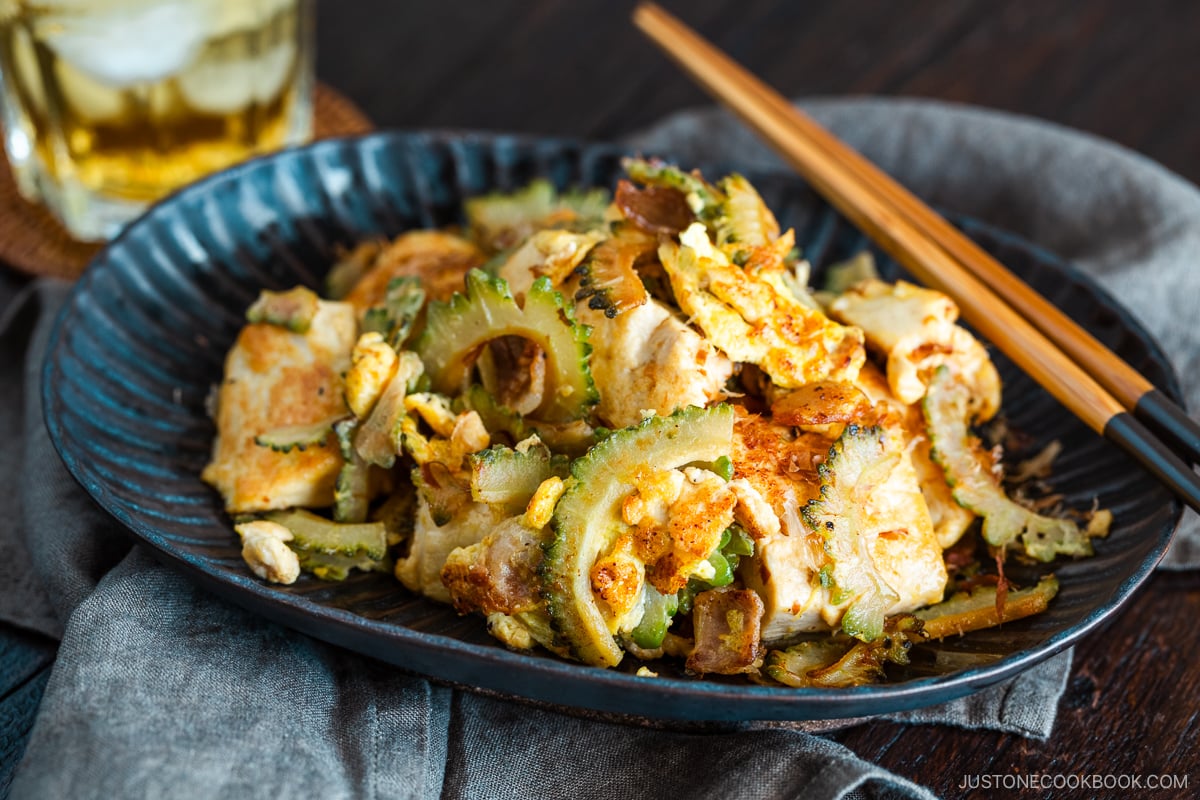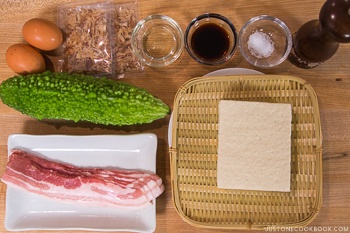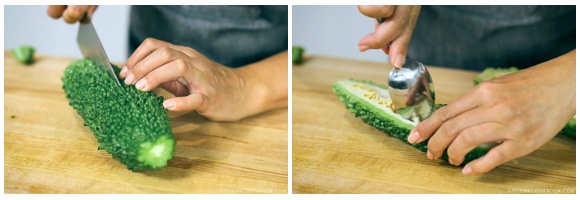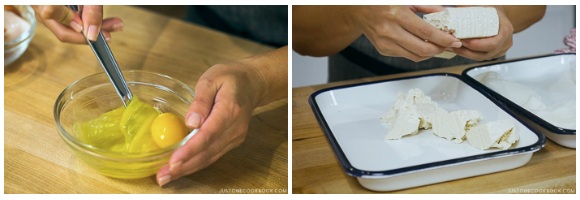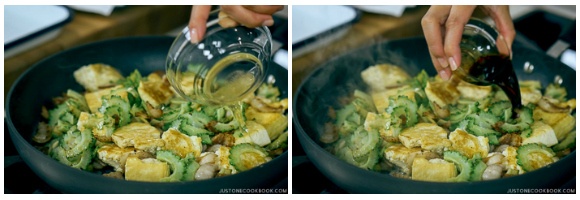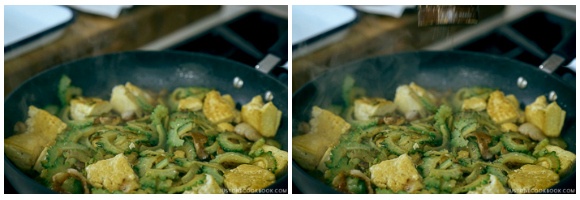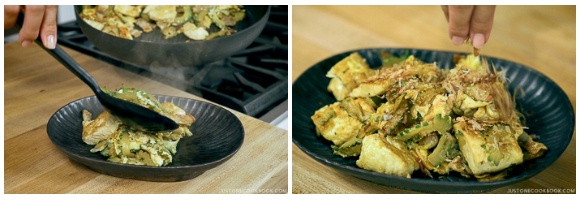Goya Champuru (ゴーヤチャンプル) is a popular stir fry dish that came from the sunny island of Okinawa in southern Japan. Made with vibrant green bitter melon, tofu, pork belly, and egg, it is packed with protein and nutrients. As I am planning my first trip to Okinawa this winter, I am excited to discover many more delicious Okinawan dishes. But first, let me introduce this simple yet absolutely healthy home-cooked dish of Okinawa – Goya Champuru with you.
What is Goya Champuru?
Goya (ゴーヤ) is an Okinawan dialect of Nigauri (にがうり). In English, it’s bitter melon or bitter gourd. As you can probably guess, bitter melon is famous for its bitterness, but it is remarkably nutritious. Chanpurū (チャンプルー) refers to Okinawan stir-fry dishes, meaning “something mixed” in Okinawan. Stir-fry dishes are a big part of Okinawan cuisine. There are different types of champuru. Usually, it contains tofu with some kind of vegetables, meat, or fish. Common ingredients include spam, pork, egg, bean sprouts, and bitter melon. Spam is not typically used in mainland Japan, but Okinawan cuisine uses spam due to the influence of the US Navy. Growing up in Yokohama (Tokyo area) between the ’70s and ’90s, Okinawan restaurants were rare to find and I had never had a chance to try Okinawan dishes. Through the NHK TV drama “Churasan” (ちゅらさん) broadcasted in 2001, many people became interested in Okinawan culture and visited Okinawa on vacation. The popularity of Okinawan food spread all over mainland Japan, and we started seeing more Okinawan restaurants everywhere. Even Japanese housewives started to cook Okinawan dishes at home.
5 Health Benefits of Bitter Melon
How to Choose the Bitter Melon
Bitter melon season in Japan is from July to September. These days, bitter melon is also available at farmers’ markets or Asian grocery stores in the US. For the best taste, choose bitter melon in a relatively smaller size with lots of bumps. The surface should be fresh and shiny green, and you want to pick one that feels firm to the touch.
How to Store the Bitter Melon
To keep bitter melon fresh for a longer time, remove the seeds and pith first as they go bad quickly. Make sure you remove the inner white pith clean as that’s where the bitterness most concentrates. After slicing, you can store them in an airtight container in the refrigerator for later use.
How to Reduce Bitterness of the Bitter Melon
I learned to sprinkle some salt, but I also heard that enhances the bitterness instead. Some suggest cooking in lightly salted boiling water, then again I heard the method also causes bitterness. I assume everyone’s grandma suggests different things and you just need to try out the method that works for you. I use the salt method as it draws out moisture with some bitter flavors. This amazing gourd may have an acquired taste, but there are plenty of good reasons to eat it. In this homey Okinawan stir fry, crunchy crisp bitter melon is combined with soft creamy tofu and cooked in a delicious umami-rich dashi and soy sauce seasoning. It’s truly a healthy and everyday meal you can serve for the family. I’d like you to give it a try. Do you have any experience cooking with bitter gourd (goya)? What are your favorite ways of cooking with it? How do you remove the bitterness of the gourd? Share with us in the comment below!
Other Bitter Melon Recipe
Bitter Melon Shiraae Wish to learn more about Japanese cooking? Sign up for our free newsletter to receive cooking tips & recipe updates! And stay in touch with me on Facebook, Pinterest, YouTube, and Instagram.
